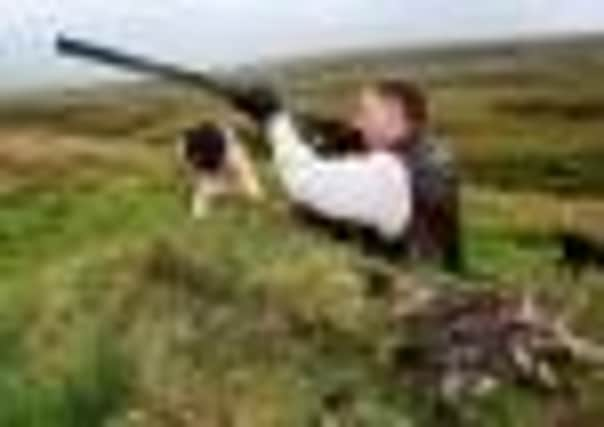Video: This EU threat to our moorland economy


THE grouse shooting season got under way today, a day later than usual today because the so-called “Glorious Twelfth” fell on a Sunday. But the region’s moorland owners fear an approaching crisis caused by an EU-imposed ban on the only effective herbicide known to control bracken.
Bracken can have a devastating impact on moorland areas and has been controlled for the past few decades by a chemical known as Asulam.
Advertisement
Hide AdAdvertisement
Hide AdHowever legislation from Brussels means this is the last summer land can be sprayed with the herbicide.


The EU’s European Standing Committee on the Food Chain and Animal Health enacted a ban on the chemical following safety concerns over aerial spraying by spinach growers in continental countries.
Moorland owners fear the move will leave vast tracts of countryside vulnerable to massive bracken infestations, something they fear will change the face of Britain’s countryside, devastate wildlife and destroy land management worth about £100m a year.
The ban will be keenly noticed in the North York Moors National Park as well as other areas of historic moorland in the area,
Advertisement
Hide AdAdvertisement
Hide AdMuch of it has Site of Special Scientific Interest status and, ironically, is protected under European law for plants and birds.
The Moorland Association (MA), currently preparing for the start of the 2012 season on August 13, said that the ban will end the successful stewardship of 850,000 acres of precious heather.
MA vice chairman George Winn-Darley, who manages 6,500 acres of North Yorkshire heather moorland, said it was “European bureaucracy gone mad”.
“Without the government-approved chemical, successfully and safely used for 35 years, our countryside and rural livelihoods will suffer very serious consequences,” he said.
Advertisement
Hide AdAdvertisement
Hide Ad“This will not only adversely affect biodiversity, including red list endangered species, but radically impact on grouse management, jobs and ultimately the appearance of globally important moors.
“Three quarters of the world’s heather moorland is found in the UK.
“Without Asulam, we would have already lost 50 per cent of it.
“Designed to safeguard continentally grown spinach, the ban will be devastating to our rural economy as moorland gives way to the suffocating effects of bracken.
Advertisement
Hide AdAdvertisement
Hide Ad“Grouse breeding will be badly hit, along with the shooting industry, which is worth over £67m in England alone, creates 42,500 days of work a year and supports over 1,500 jobs.
“MA members spend vast sums of money managing the moorland habitat. So much is at risk, including 46 upland bird species.”
Grouse shooting typically begins on August 12, the so-called Glorious Twelfth. However game cannot be shot on Sunday, which means the glorious 12th gives way to the 14th this year.
The Asulam ban comes as landowners face a tough shooting season with bird levels expected to be low following the unseasonably wet weather seen so far.
Advertisement
Hide AdAdvertisement
Hide Ad“May and June have been the wettest on record, bad news for all breeding birds,” said Mr Winn-Darley.
“Last year may have been the last good season for our unique wild red grouse.”
The British Association for Shooting and Conservation said that prospects for the forthcoming grouse shooting season were “mixed” and that the full impact of the wet weather on grouse breeding numbers probably will not be known until after the season starts.
The Yorkshire Post approached the European Commission for comment but received no reply.